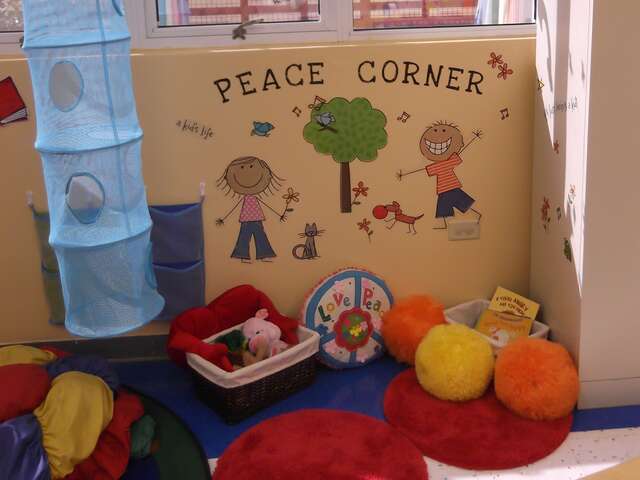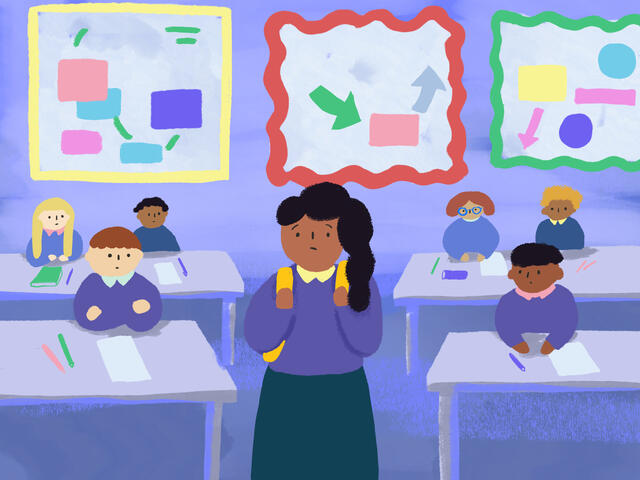Back to school nerves are common, but refugee and asylum-seeking students can often face extra challenges. The International Rescue Committee's Healing Classrooms programme supports educators to develop inclusive learning spaces where refugee and asylum-seeking students feel safe and welcome.
Drawing inspiration from the Healing Classrooms approach, here are five top tips to help refugee students thrive in their new school settings this year:
1. Prepare your school and staff
Before the school year begins, take proactive steps to prepare your school community with the training and resources they need. This can can include:
- Reaching out to your Local Authority to understand what support systems are in place for new refugee families.
- Participating in trauma-informed teaching training, such as the Healing Classrooms programme.
- Connecting with organisations such as Schools of Sanctuary which aims to support children and young people seeking sanctuary in the UK.
- Ensuring your entire staff, including support staff, receives appropriate training to create a welcoming environment.
- Inquiring about interpreter services to help with family communication and settlement.
Read more: Guidance on initial meet-up with caregivers.
A supportive environment is especially crucial for children who have been displaced as their difficult journeys can noticeably impact their mental health.
Photo: Hannah Jacobs and Pal TV for the IRC
2. Establish a welcoming classroom environment
Create a classroom that celebrates diversity and helps refugee students feel represented:
- Display "hello" greetings in various languages, including those of your new students.
- Incorporate world maps and diverse artwork in your classroom decor.
- Provide visual timetables to help students understand daily routines.
- Have extra sets of resources (name tags, notebooks, stationery) ready for new arrivals.
- Designate staff members who can provide extra support, especially those who speak the student's language.
- Stay informed about global events that may have led to families having to flee their homes.
Read more: The top 10 crises the world can’t ignore in 2024.
Staff at Fairlight Primary School in Brighton created a 'Peace Corner' to help children feel safe in their new classrooms after taking part in the IRC's Healing Classrooms training.
Photo: Suzanne Fisher
3. Implement a Buddy System
Set up a peer support network to help refugee students navigate their new school:
- Use resources like the IRC's "Being a Buddy" training materials to prepare students for this role.
- Select and train buddies who can help new students feel welcome and included.
- Ensure buddies are prepared to assist with practical matters like finding classrooms and understanding school routines.
4. Focus on social-emotional learning
Prioritise creating a safe and inclusive environment before starting academic work:
- Use resources like the IRC's Social Emotional Learning (SEL) Lesson Plan Bank to support students' emotional well-being.
- Provide opportunities for group discussions and activities that promote understanding and empathy.
- Respect silent periods for students who may not be ready to verbally participate, offering alternative ways to engage in learning.
It's important to provide opportunities for group discussions and activities in the classroom that promote understanding and empathy from all students.
Photo: Hannah Jacobs and Pal TV for the IRC
5. Adapt your teaching approach
Tailor your teaching methods to support refugee students' unique needs:
- Assess language levels using appropriate tools such as the EAL National Subject Association, Bell Foundation, or NASSEA.
- Utilise visual aids, technology, and dual-language resources to facilitate learning.
- Incorporate movement, art, and music into lessons to make the curriculum more engaging and accessible.
- Adapt the curriculum to include important cultural events and festivals that represent your diverse student body.
- Meet with parents and carers of the child before school starts to learn about their needs. This information can be then used to tailor your classroom setup and activities.
More about Healing Classrooms




